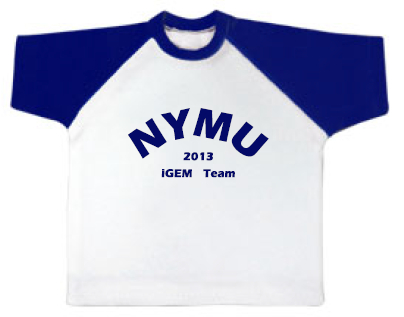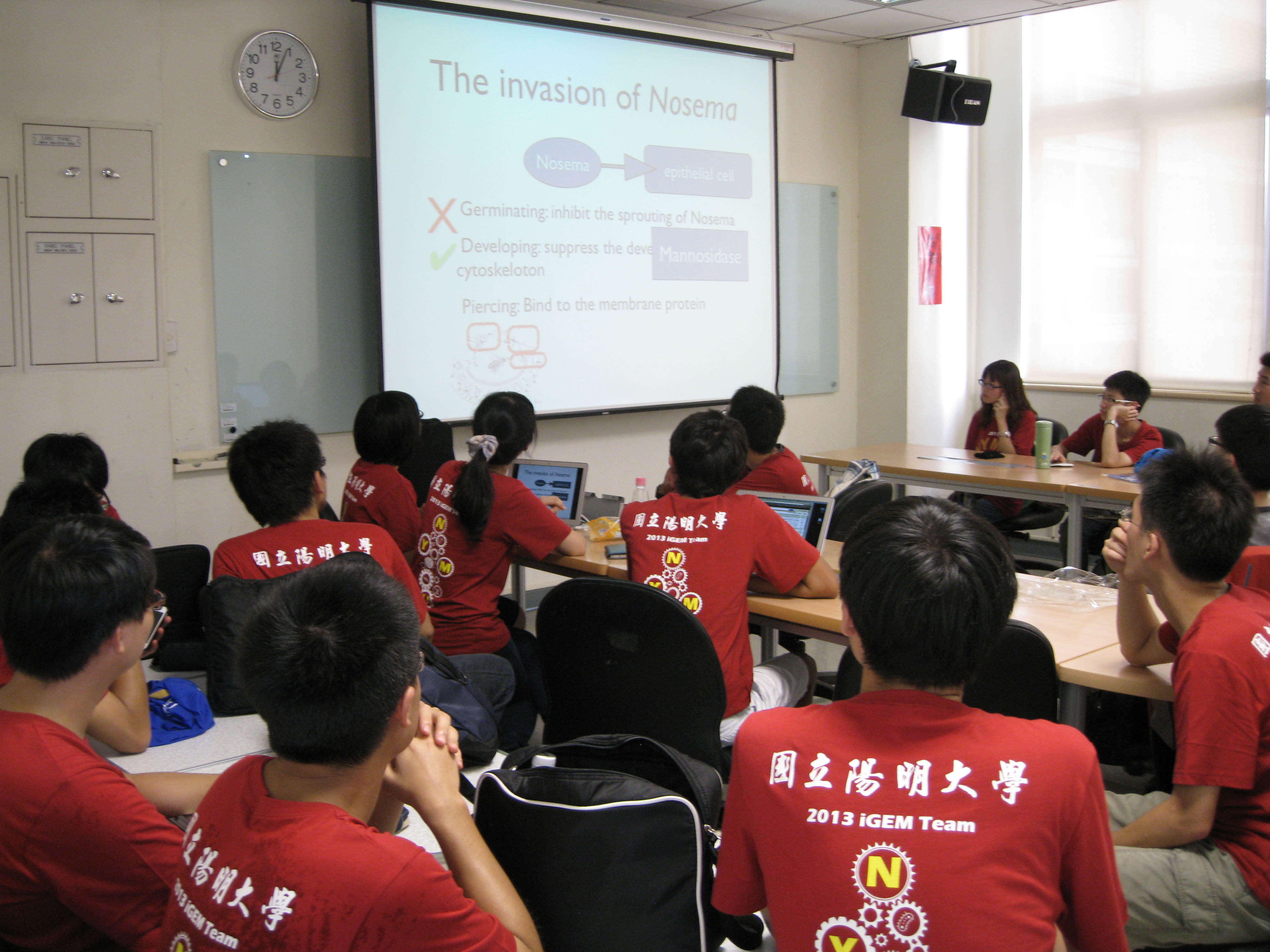Team:NYMU-Taipei/HumanPractice/HumOverview
From 2013.igem.org
| Line 8: | Line 8: | ||
<br>First, we shared the beauty of synthetic biologyour, a topic which we presented and promoted in front of our schoolmates and also to those in Taipei American School. Enthusiastically sharing our ideas, we met up with some of the iGEM teams in Taiwan and China, taking part in the conference and sharing knowledge. | <br>First, we shared the beauty of synthetic biologyour, a topic which we presented and promoted in front of our schoolmates and also to those in Taipei American School. Enthusiastically sharing our ideas, we met up with some of the iGEM teams in Taiwan and China, taking part in the conference and sharing knowledge. | ||
| - | |||
| - | |||
<br>Second, we cooperated with other team to combine different technique that would improve our project. We help NTU-Taida characterized their BioBrick devices, the ACE (BBa_K1157020) and CEA (BBa_K1157021). | <br>Second, we cooperated with other team to combine different technique that would improve our project. We help NTU-Taida characterized their BioBrick devices, the ACE (BBa_K1157020) and CEA (BBa_K1157021). | ||
<br>Third, we determined to build up an easier way in doing experiments for those who are not that familiar with the basic experimental techniques. We have made some videos of doing experiments. They are the way we teach students how to conduct wet lab experiments. | <br>Third, we determined to build up an easier way in doing experiments for those who are not that familiar with the basic experimental techniques. We have made some videos of doing experiments. They are the way we teach students how to conduct wet lab experiments. | ||
| + | |||
| + | <br>Forth, we tried to make our project a practical application to the environment. We had lots of interviews with experts concerned and beekeepers. More importantly, we have gone to bee farms and help the beekeepers to check if their bees were infected by Nosema ceranea. We also created primers to identified Nosema ceranea. This provides a fast and precise way to find out Nosema ceranea besides barely using microscope. | ||
| + | |||
for we hope that one day more people could bask in On certain occasions, we incidentally knew that some iGEM teams in Taiwan were facing difficulties like having insufficient fund or experienced members, which built up lots of barriers to make a whole project completed. Thus, | for we hope that one day more people could bask in On certain occasions, we incidentally knew that some iGEM teams in Taiwan were facing difficulties like having insufficient fund or experienced members, which built up lots of barriers to make a whole project completed. Thus, | ||
Revision as of 00:15, 28 September 2013


Overview
To better our project, we have done four bravo jobs as our human practice.
First, we shared the beauty of synthetic biologyour, a topic which we presented and promoted in front of our schoolmates and also to those in Taipei American School. Enthusiastically sharing our ideas, we met up with some of the iGEM teams in Taiwan and China, taking part in the conference and sharing knowledge.
Second, we cooperated with other team to combine different technique that would improve our project. We help NTU-Taida characterized their BioBrick devices, the ACE (BBa_K1157020) and CEA (BBa_K1157021).
Third, we determined to build up an easier way in doing experiments for those who are not that familiar with the basic experimental techniques. We have made some videos of doing experiments. They are the way we teach students how to conduct wet lab experiments.
Forth, we tried to make our project a practical application to the environment. We had lots of interviews with experts concerned and beekeepers. More importantly, we have gone to bee farms and help the beekeepers to check if their bees were infected by Nosema ceranea. We also created primers to identified Nosema ceranea. This provides a fast and precise way to find out Nosema ceranea besides barely using microscope.
for we hope that one day more people could bask in On certain occasions, we incidentally knew that some iGEM teams in Taiwan were facing difficulties like having insufficient fund or experienced members, which built up lots of barriers to make a whole project completed. Thus,
Our wish is to change the world in a tender way and make others soaked in the overwhelming astonishment of biological wonder.
 "
"










